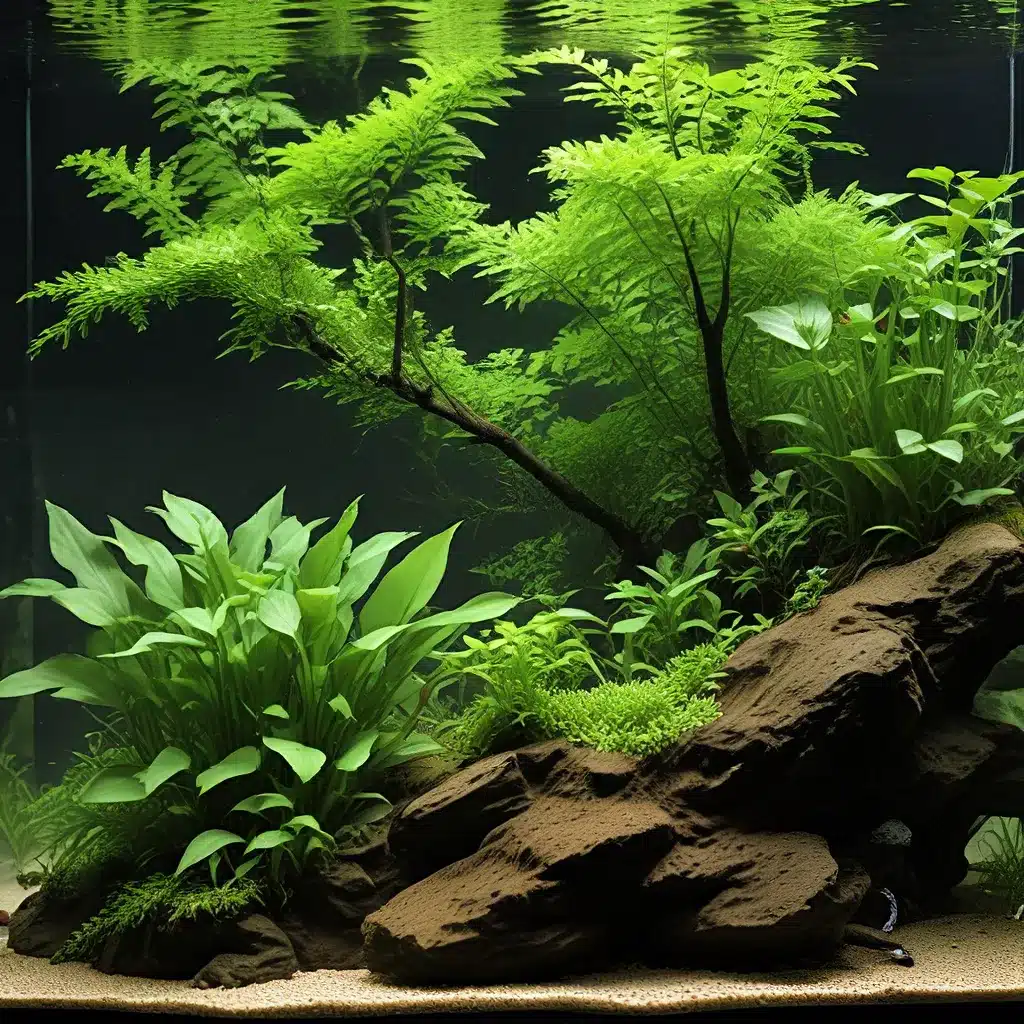
Unlocking the Potential of Aquarium Substrates
When setting up a captivating aquarium, the substrate often plays a crucial yet overlooked role. Far more than just a foundation, the substrate can significantly impact the overall ecosystem, water chemistry, and the thriving of aquatic plants and inhabitants. In this comprehensive article, we’ll delve into the world of alternative substrate materials, exploring innovative solutions that can transform your aquarium into a vibrant, naturalistic haven.
Embracing the Natural Inspiration
To create a truly immersive and authentic aquatic environment, we must look to nature for guidance. In tropical aquatic ecosystems, the substrate is a complex, dynamic system, comprising a diverse array of materials, from fine sediments to decomposing botanical matter. Tannin Aquatics emphasizes the importance of understanding these natural substrates and how they influence the overall ecology of the system.
In meandering rivers and forested streams, the substrate is often a mixture of soil, leaves, twigs, and other organic materials. These natural components not only affect water chemistry but also provide essential habitats for a thriving microbial community. This intricate web of life is what we aim to recreate in our aquariums, fostering a self-sustaining and visually captivating environment.
Exploring Alternative Substrate Materials
Leaves and Botanical Materials
One of the most versatile and natural-looking substrate options is the incorporation of leaves and other botanical materials. As these organic materials decompose, they release tannins and humic substances into the water, creating a tinted, blackwater-like environment that many tropical fish species thrive in. Additionally, the decomposition process fuels a diverse microbial community, providing a valuable food source for small invertebrates and fry.
Twigs and Woody Debris
Another innovative substrate option is the use of twigs and other woody debris. These materials not only add visual interest and structure to the aquarium but also serve as a colonization substrate for beneficial biofilms and microbial growth. The interstitial spaces created by the arrangement of twigs offer valuable hiding spots and foraging grounds for bottom-dwelling fish and shrimp species.
Coconut-based Substrates
For aquarists seeking a more refined and controlled substrate solution, coconut-based materials, such as Fundo Tropical or Substrate Fino, provide an excellent alternative. These substrates not only mimic the natural appearance of tropical aquatic environments but also offer a range of benefits, including nutrient processing, water filtration, and the support of beneficial microbial life.
Enriching the Substrate for Enhanced Functionality
Beyond the aesthetic appeal of alternative substrate materials, the concept of “substrate enrichment” or “enhancement” is crucial to creating a thriving, self-sustaining aquarium ecosystem. This approach involves the strategic addition of botanical materials, such as leaves, twigs, and other decomposing organic matter, to the substrate.
The enriched substrate functions as a sort of “refugium,” providing protection and a haven for a diverse array of microorganisms, crustaceans, and even small algae. These organisms play vital roles in nutrient cycling, waste processing, and serving as a food source for your aquarium inhabitants. By creating this dynamic, natural-functioning substrate, you can support the overall health and stability of your aquarium, reducing maintenance requirements and fostering a more balanced, self-regulating system.
Practical Applications and Considerations
When incorporating alternative substrate materials into your aquarium, it’s essential to consider the specific needs and requirements of your aquatic species. Some fish, such as Discus and certain catfish, may thrive in the tannin-rich environment created by decomposing leaves, while others may prefer a more neutral substrate.
Additionally, the depth and composition of the substrate can influence plant growth, water flow, and the overall aesthetic of your aquarium. Experiment with different layering techniques, mixing various materials, and observing the responses of your aquatic inhabitants to find the perfect balance for your setup.
It’s worth noting that the transition to an alternative substrate may require a period of adjustment for both you and your aquarium residents. However, with patience, diligence, and a commitment to understanding the natural processes at work, you can create a truly captivating and low-maintenance aquatic ecosystem that showcases the beauty and complexity of the underwater world.
Conclusion: Unlocking the Aquarium’s Full Potential
By exploring the world of alternative substrate materials and embracing the concept of substrate enrichment, aquarists can unlock the full potential of their aquariums. From the tannin-infused, botanically-inspired setups to the structured, coconut-based substrates, the possibilities are endless.
Ultimately, the key lies in understanding the natural inspirations that shape these diverse aquatic environments and translating them into our captive systems. By doing so, we can create aquariums that not only captivate our senses but also provide a thriving, self-sustaining home for the aquatic life we cherish.
Remember, at King Aquarium, we’re committed to empowering aquarists with the knowledge and resources to transform their aquariums into true aquatic masterpieces. Embrace the power of alternative substrates, and let your creativity flow, as you cultivate a harmonious, nature-inspired ecosystem in your own living room.

